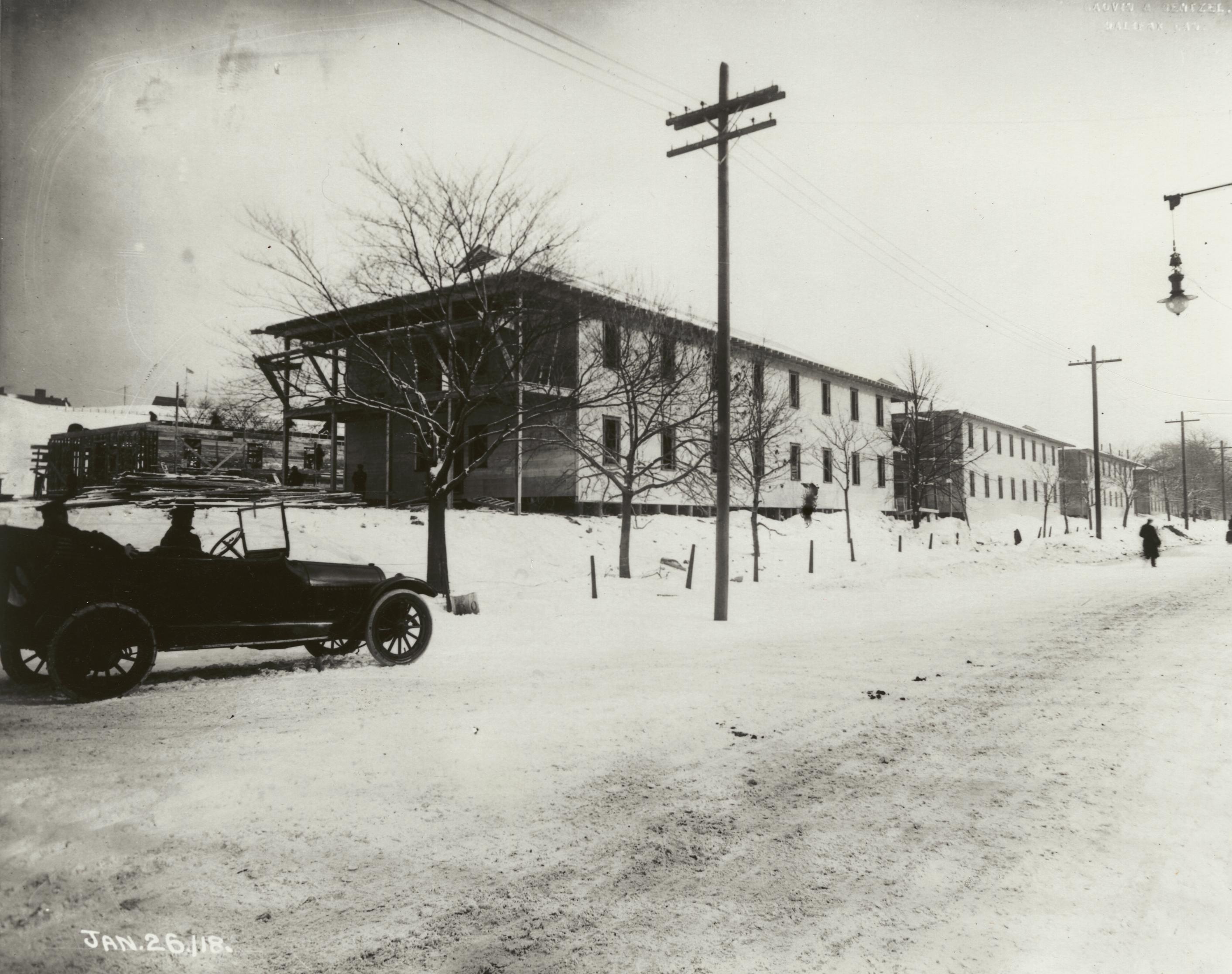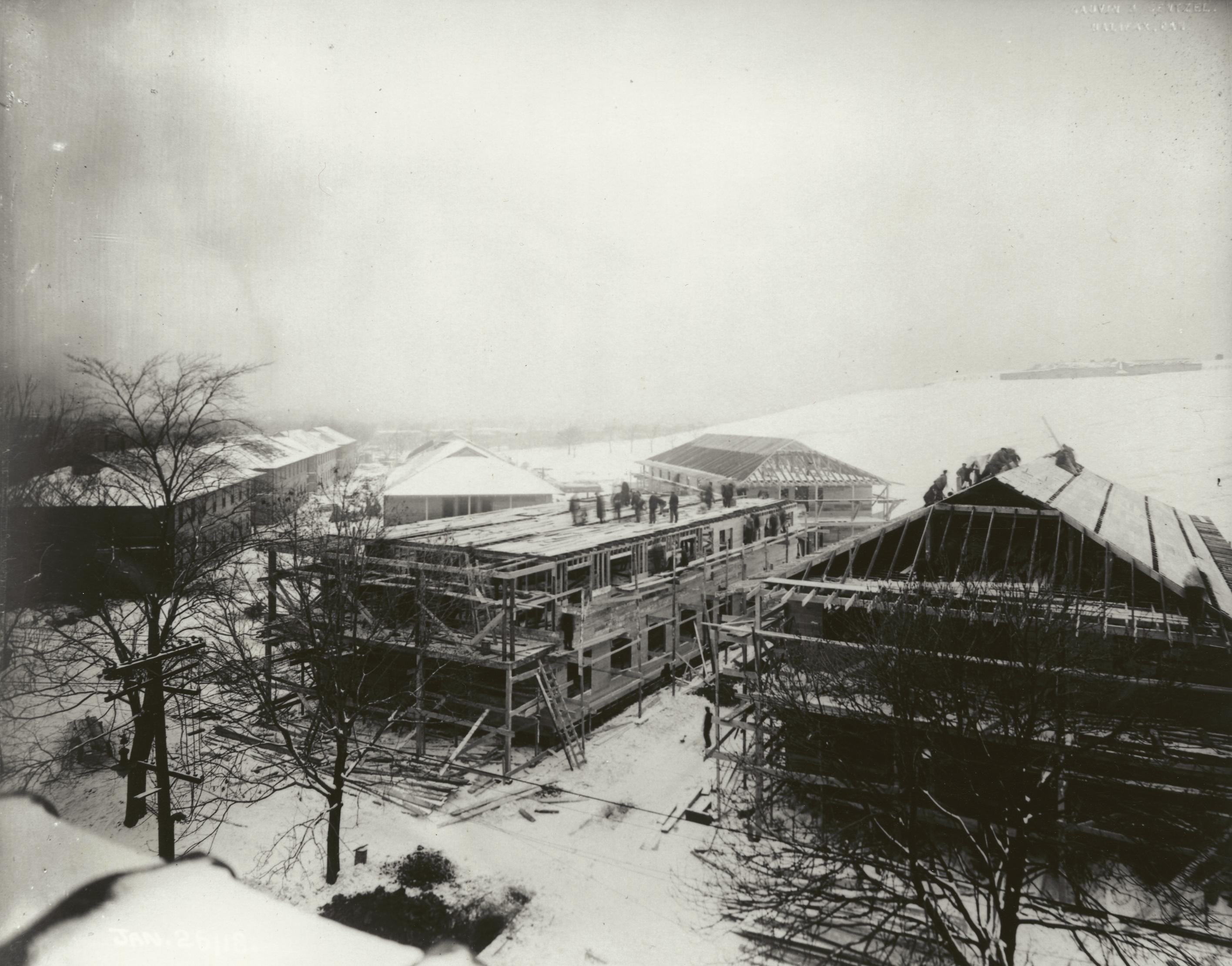
Relief Commission Case Files
After the Halifax Explosion on 6 December 1917, the Halifax Relief Commission was created by the federal government to help rebuild the city and administer welfare services for the explosion's victims. Nineteen Commission family case files have been sampled by the Champlain Society, to explore what it meant to be poor, old, Black, Indigenous, or from an otherwise marginalized community affected by the explosion.

Black Nova Scotians
In 1917, approximately 1,000 people, or roughly 2 per cent of the overall population of Halifax-Dartmouth, had an African-Nova Scotian or Indigenous identity. They are represented by six of the families included in this sample. While varied in terms of such factors as age, occupation, and income, they shared the challenge of having to deal with a mainstream community infused, in various ways, with racist values.
For example, an overt expression of anti-Black sentiment erupted over finding accommodations for widow Rose Hickey, her mother, and six children. Racial integration of the public-housing units run by the Halifax Relief Commission provoked debate among Commission staff and outright resistance from fellow tenants.

More subtle forms of discrimination included tagging clients as being “mulatto” or “coloured”; hinting at the presence of venereal disease; offering relatively low payment on claims for lost or damaged property; early and arbitrary suspension of the provision of food supplies; and persistent neglect of residents of Africville, the Black community in North End Halifax.
Nevertheless, the situation was not entirely bleak. At least one of the three commissioners, Judge W.B. Wallace, seems enlightened by the standards of the day toward Black clients . As well, African Nova Scotians were given unrestricted access to public health care, and, while evidence is limited, they appear not to have been discriminated against over the issuance of cash allowances or disability and widows’ pensions.
It also helped that Black women such as Rachael Brown and Mary Lucas were highly assertive in their dealings with the Relief Commission, thereby winning at least some small victories in an era when Nova Scotians of colour possessed limited civil rights.
Elderly
Old age — as defined in 1927 when Canada launched a pension plan for the elderly — began at age 70. In 1917, approximately 1,700 (3 per cent) of the Halifax-Dartmouth population were 70 or older, with about 25 per cent more females than males. Four case files examined here feature two widows and two married couples with ages between 72 and 84.
Before the explosion, the women in these sample files had all been relatively healthy. Of the men, one had a heart condition and another was recovering from a stroke. The December disaster had a negative impact on all these people. Both widows were seriously injured and one of them then died, her demise probably having been hastened by the disaster. Of the two convalescent men, both suffered shock, which quickly killed one and left the other incapable of further employment.
The explosion also left two of the families homeless, and another lost the property that had been its principal source of income. Instead of being largely self-reliant, all now were in acute need of assistance. Some of that assistance came from relatives and friends. Help was also provided by the Relief Commission, which, while quick to supply medical care and emergency provisions, hesitated over the payment of cash allowances and, later, the provision of pensions.
In the case of Katherine O’Donoghue, Commission staff delayed issuing a money allowance on the grounds that her able-bodied daughter should return to work rather than stay home to care for her mother. Similarly, Maria Walker’s cash allowance was held up in an attempt to persuade her to stay with relatives in the country rather than return to the city.
As for Annie Kingston, newly widowed, her trouble with the Commission involved the question of whether her husband’s death resulted from the explosion. After vacillating, Commission staff yielded to public pressure and gave Maria a partial widow’s pension. Similarly, a complaint from Joseph Mont led to the restoration of food supplies to his family and an eventual, albeit skimpy, disability settlement for himself.
While few, these four examples suggest that as age increased, so did the risk of being subjected to manipulation by the Relief Commission. Staff tended to assume that they, rather than their elderly clients, knew how best to plan for the future. As well, the Commission proved reluctant to assume long-term responsibility for those in their declining years. The result, at least for aged victims of the explosion, was neglect, which sometimes led to the Poor House or premature death.
Non-British Immigrants
At the time of the explosion, Halifax-Dartmouth held about 1,500 (2.5 per cent of the population) immigrants from continental Europe and adjacent parts of the Middle East.
This group is represented here by three families, one Russian-Jewish, another Italian, and the third Syrian (see Arab Canadians). Two of them operated small businesses that had been wrecked by the explosion. Efforts to restock their shelves were delayed by questions among Commission staff as to whether these people could be trusted to be honest about the claims they were putting forward.
The third case involved an impoverished widow with three children, who challenged mainstream social convention when she opted to give her newborn baby to another immigrant family whose lifestyle appeared dubious to both Commission staff and the clergy.
Although all three disputes ended in compromise, the negotiations that took place suggest that these clients might have had an easier time if they had belonged to the mainstream of the community.

Other Marginalized Families
As a garrison town actively engaged in the war effort, Halifax was home to a large number of military families, some led by men who had recently left or retired from the Armed Forces. Poverty and relatively low levels of education made these people particularly vulnerable to becoming overwhelmed by the circumstances of the day.
The same applied to unmarried women with children, whose efforts to cope could bring them into conflict with those in positions of authority, including Commission staff.
This article has been condensed and excerpted from The Champlain Society publication "We Harbour no Evil Design": Rehabilitation Efforts after the Halifax Explosion of 1917, edited by David A. Sutherland. Reprinted with permission from The Champlain Society.

 Share on Facebook
Share on Facebook Share on X
Share on X Share by Email
Share by Email Share on Google Classroom
Share on Google Classroom
